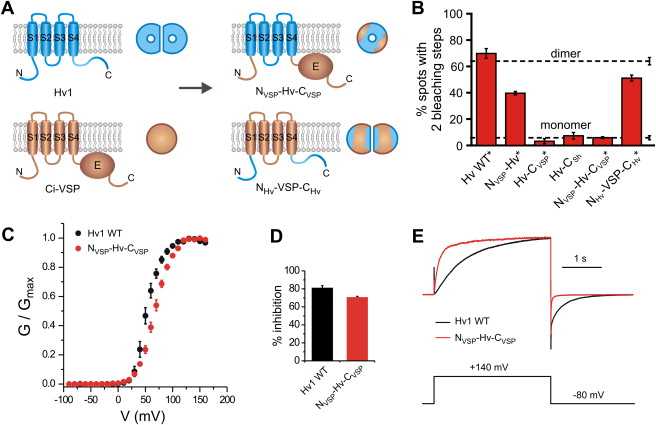
The voltage-gated proton channel Hv1 has two pores, each controlled by one voltage sensor
Abstract
In voltage-gated channels, ions flow through a single pore located at the interface between membrane-spanning pore domains from each of four subunits, and the gates of the pore are controlled by four peripheral voltage-sensing domains. In a striking exception, the newly discovered voltage-gated Hv1 proton channels lack a homologous pore domain, leaving the location of the pore unknown. Also unknown are the number of subunits and the mechanism of gating. We find that Hv1 is a dimer and that each subunit contains its own pore and gate, which is controlled by its own voltage sensor. Our experiments show that the cytosolic domain of the channel is necessary and sufficient for dimerization and that the transmembrane part of the channel is functional also when monomerized. The results suggest a mechanism of gating whereby the voltage sensor and gate are one and the same.